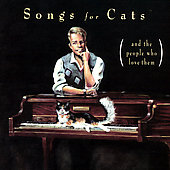Any party involved in a dispute over the alleged unauthorized use of content protected by copyright wants to understand quickly what’s at stake. How much might the plaintiff recover, and the defendant be on the hook for, if the matter goes to trial? Here is a summary of the categories of money damages available in a copyright infringement litigation.
A copyright plaintiff may choose from two categories of money damages:
Door # 1: the plaintiff’s actual damages PLUS the defendant’s profits attributable to the infringement, if not duplicative of actual damages; OR
Door # 2: statutory damages of $750-$30,000 per registered work, which can be enhanced up to $150,000 per registered work if the infringement was willful (if the defendant acted with knowledge or reckless disregard of the plaintiff’s rights).
Actual damages are often measured by the value of the plaintiff’s lost license fee, or lost royalties. In an arm’s-length transaction between a reasonable seller and buyer, what would be the value of the use at issue? If a photographer routinely licenses an image for a similar type of use as the use at issue for $100, the plaintiff’s actual damages are $100.
Determining profits can present complex issues often best suited for expert testimony. For example, if a publisher sells a compilation of 180,000 images, and the plaintiff sues for infringement of 35 of those images, how do you determine the profits attributable to those 35 images as opposed to the remaining 179,965 images, the defendant’s marketing efforts, and other factors? The plaintiff need only prove the defendant’s revenues associated with the allegedly infringing product. The defendant bears the burden of establishing costs and other elements deductible to arrive at a net profits figure. The need to retain an expert to examine the relevant financials, prepare a written report of the expert’s opinion for disclosure to the opposing party, submit to a deposition, and testify at trial substantially increases the costs of litigation.
A plaintiff may recover statutory damages for each *registered work* infringed. If a defendant makes 100,000 unauthorized copies of a single registered book and a jury finds the copies infringing, the plaintiff may only seek a single award of statutory damages. However, if the defendant makes a single infringing copy of ten different registered books, the plaintiff may seek ten awards of statutory damages.
In order to be eligible to seek an award of statutory damages, however, the plaintiff must have obtained a registration covering the work at issue:
- with respect to an unpublished work, before the alleged infringement began
- with respect to a published work, before the alleged infringement began, or within three months of first publication of the work .
Statutory damages have the potential to be substantial where there are multiple registered works at issue in a litigation.
A timely registration of copyright as outlined above also entitles the plaintiff to seek an award of attorneys’ fees if the plaintiff prevails on the merits. The availability of attorneys’ fees significantly increases a defendant’s potential exposure, as such fees can amount to hundreds of thousands of dollars.

